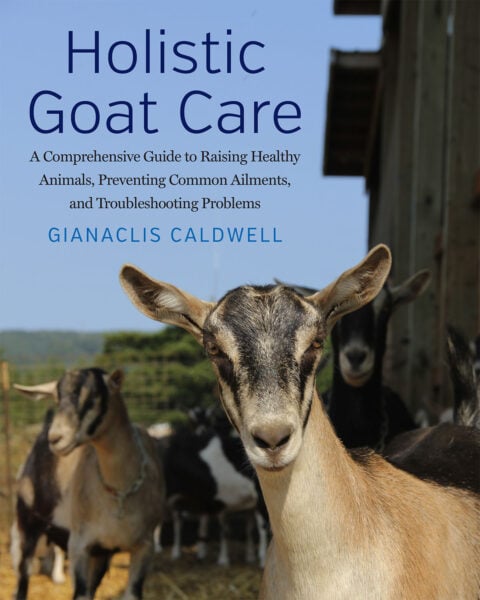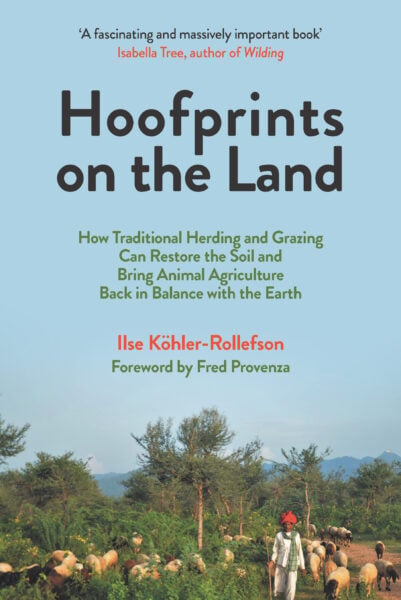Boreray Sheep: A “Woolly” Remarkable Flock
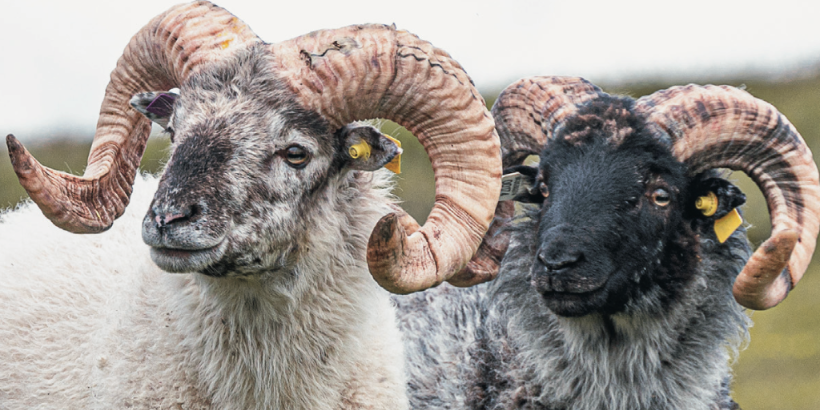
“Ewe” won’t believe how much Boreray sheep have to offer! This breed provides much more than just a cute face and a full coat of wool. When raised in an ideal environment, Boreray sheep can have a huge positive impact on your farmland.
The following is an excerpt from The Lost Flock by Jane Cooper. It has been adapted for the web.
All photographs copyright © 2023 by Jane Cooper except where otherwise stated.
Boreray Sheep: A Beauty to Behold
The real stars of this story are the sheep, so I think that’s the place to begin. Most Boreray sheep have creamy white or oatmeal fleece, with dark colouring on their faces in shades of brown, dun, tan and black, usually mixed with white areas; in some sheep, the white is an inverted ‘V’ shape. Darker fleece and hair are commonly found on the slender legs, the naturally short tail and often in a spot on the back of the neck or sometimes in a collar round the whole neck.
From Lamb to Sheep: Boreray Lambs
Boreray lambs are astoundingly cute by any standards. Most of them are born a brilliant white in colour, once their mothers have licked them clean.
The descendants of my first ram, Adrian (whom we nicknamed Boris), are usually instantly recognisable by a white face with distinct black colouring around the nose and mouth, and black around the top of the face and horn buds, extending onto the ears.
As lambs grow during their first few months, their faces usually get darker and some acquire the characteristic white inverted ‘V’ shape in an otherwise dark face.
The fleece of many of the Lost Flock Borerays also gets darker over the years, sometimes with quite a dramatic colour change as a lighter winter fleece is shed to reveal a much darker summer one. A few lambs are born with darker fleece over some or all of their body, but they too darken further as they get older.
How Big Are Boreray Sheep?
Boreray sheep today are small, as were all sheep when they first came to Britain thousands of years ago. Males can reach 50 kilogrammes, but females average around 35 kilogrammes. The shoulders of some adults only reach my knee – and I’m not very tall. Both males and females have horns, although ewe horns are not nearly as large and magnificent as the curl- ing horns of the rams, these being balanced by a roman nose that develops as they get older.
I wonder if this is what turns the bleating noise commonly associated with sheep to what I can only describe as a ‘roar’ from mature rams? The horns keep growing throughout the sheep’s life, although the rate of growth slows as they get older. Many of my rams weigh 50 kilogrammes before their horns get too wide for them to fit into the ‘cage’ part of the sheep scales.
Skull And Horn Size
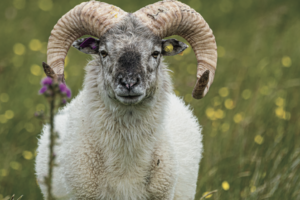
Two-year-old Gregor on the fields at Burnside, 2022, where no plants are regarded as weeds. Image by Linda Cortright.
The skull and horns of a mature ram can weigh 5 kilogrammes – that’s 10 per cent of their whole body weight. The shape of their horns, while having a characteristic look about them that readily enables discrimination from rams of other primitive breeds of sheep, is unique to each ram.
Bollocks, my second ram, had the widest horns of all the rams in Orkney, and some of his sons have inherited that feature. The circumference of the base of horns on older rams is massive. I can’t get my hands round them.
It is possible to identify, on the grooved and textured surface of the horns, lines showing the break between the growth for each year.
In winter, the rams grow long hairy beards and manes to give themselves a larger and more intimidating appearance for hierarchical behaviour. In contrast to modern breeds of sheep, the Boreray rams have much slimmer rear ends. All the attention is on the imposing front end.
Ewe Wouldn’t Believe It: Boreray Ewes
The ewes are smaller, but a few do attain a weight of 40 kilogrammes when they are three or four years old. They don’t have the extra hairy winter growth as the rams do and their horns are significantly thinner and shorter, as are those on castrated males, so they don’t curl round like ram horns. There is more variability in shape of these smaller horns.
Some have an observable twist and this seems to be inherited, although it sometimes skips a generation. Even fewer are swept back over the back of the neck. This can actually be a problem in older sheep as their horns keep growing.
Both Friddy and her twin brother Frodo (a castrated ram, or ‘wether’, kept for his fine fleece) have had to have the tips of their horns cut off to prevent them touching their necks. It’s a simple procedure like cutting a toenail.

Ewes and five-month-old lambs growing their warm winter fleeces, showing some of the variety of colours. Burnside, October 2021.
Creating A Flock of Boreray Sheep
When I create a starter flock for a new farmer, I try, where possible, to include a ‘tame’ sheep who was hand-reared. The process of the domestication of sheep, around 9000 BC, probably in south-west Asia, possibly began with a young, captured sheep, just old enough to survive without milk, being imprinted with a human instead of its mother. Today, when an orphan or rejected lamb is raised by its shepherd, the same process is followed.
Bottle-fed, or ‘cade’ lambs as they are called, can become closely attached to the person rearing them and this attachment continues into adult life. Such tame sheep have a useful role in our Orkney Boreray flocks. As they enthusiastically go to their shepherd, the rest of the group is far more likely to follow their lead.
Domesticating Boreray Sheep
The process of domestication is well recorded to cause behavioural and physical changes in animals, even before scientific and planned breeding created the modern, ‘efficient’ large white sheep we see in British fields today. For the first few thousand years, the changes in sheep due to domestication were a reduction in the size of horns and an increase in the proportion of wool in the sheep’s hairy coats.
The wild ancestors of domesticated sheep had large horns and short coats, predominantly of hair. Yes, that may be a surprise to those familiar only with modern sheep and their thick wool fleeces, which for some breeds, such as Merino, consist entirely of wool fibres.
Bringing Boreray Sheep to Britain
It was about six thousand years ago that the first Neolithic farmers brought sheep to Britain. These were little sheep, by modern standards, both sexes normally having horns and being double-coated: that is, an undercoat of fine wool fibres and an outercoat of hair fibres that were longer in length. This fleece would have kept the sheep warm and dry in Britain’s wet climate. The sheep would have grown a new fleece each year, having shed the old one.
Boreray Sheep Anatomy: What Did They Used to Look Like?
We know what these sheep would have looked like because some have survived mostly unchanged over thousands of years and are now referred to as primitive sheep, or Northern European short-tailed sheep.
One significant difference in the anatomy of primitive sheep has given the group – now comprising forty or more recognised breeds, including the Boreray – this name because they actually have shorter and fewer vertebrae (eight to ten) in their tails than modern breeds of sheep (sixteen to eighteen).
Where Are Boreray Sheep Now?
This group of sheep breeds still survive on islands and remote areas of Northern Europe, including the UK and Nordic countries, stretching east to beyond the Baltic region. Recent advances in molecular archaeology indicate that the sheep coming to Britain took a route from the Caspian region of present-day Iran through Russia and Scandinavia.
Changes in the DNA of surviving primitive sheep in Russia and Northern Europe imply a route along the Volga River. Skulls and bones of sheep found at the Neolithic ‘village’ of Skara Brae in Orkney are very similar to those of the primitive sheep still living in Orkney.
Farewell to Fleece: Boreray Sheep Shedding
Boreray sheep, and the North Ronaldsay sheep native to Orkney, are two of the few breeds that have retained the primitive ability to shed their fleece. Each year in late spring and summer the fleece falls off Boreray sheep, and some other Northern European short-tailed breeds, without any intervention from humans required. Modern breeds must be sheared each year, otherwise they accumulate several years’ worth of fleece growth, which will eventually kill them with its weight and encumbrance.
The Promise of Primitive Breeds
Primitive sheep breeds are not just an interesting part of human and agricultural history. The unique and diverse genetics of primitive sheep, including their resistance and resilience to some diseases that blight modern sheep breeds, have a great deal to offer.
One example is that Boreray sheep are observed not to suffer from the painful condition of foot rot that affects 5 per cent of the UK’s commercial flocks at any one time. Cross-breeding Boreray with modern breeds has been seen to pass on some of this resistance.
Why Breed Boreray Sheep?
They can thrive in extensive farming systems, with high rates of survival when lambing unassisted outside, and they mother their lambs well. Primitive sheep can be productive when grazing a vast range of pasture types, from steep mountain slopes and bog land to island coastal land, and do so with little extra input.
Their grazing behaviour makes them ideal for sustainable grassland- or woodland-based farming systems, including conservation grazing on nature reserves and important habitats.
Recommended Reads
Bringing Back Balance: The Power of Traditional Herding & Grazing
Recent Articles
Garden strawberries are excellent for both covering the ground and for growing fruit. If you’re planning out a forest garden, or are just looking for a plant to use as ground cover, strawberries are a great option. The following is an excerpt from The Home-Scale Forest Garden by Dani Baker. It has been adapted for…
Read MoreAsparagus is a delicious vegetable with a layered history. How did this aspiring spear make its way from growing in the wild to appearing on our plates? The following is an excerpt from the The Seed Detective by Adam Alexander. It has been adapted for the web. “Nature gives us the key to every secret…
Read MoreInterested in growing trees? Here are some tips on successfully planting, transplanting, and pruning trees to create a flourishing forest garden! The following is an excerpt from The Home-Scale Forest Garden by Dani Baker. It has been adapted for the web. Planting Potted Trees and Shrubs If you order potted trees, check with your supplier to…
Read MoreWith the right strategies and practices, composting on a small farm is surprisingly easy and inexpensive. Just follow these steps for making compost, and your farm will be thriving in no time! The following excerpt is from The Lean Farm Guide to Growing Vegetables by Ben Hartman. It has been adapted for the web. (All photographs by Ben…
Read MoreGarlic mustard: while known as “invasive,” this plant can be consumed in its entirety and has great nutritional value. Plus, the garlic-flavor is a perfect addition to any recipe that calls for mustard! The following are excerpts from Beyond the War on Invasive Species by Tao Orion and The Wild Wisdom of Weeds by Katrina…
Read More

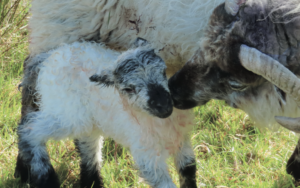
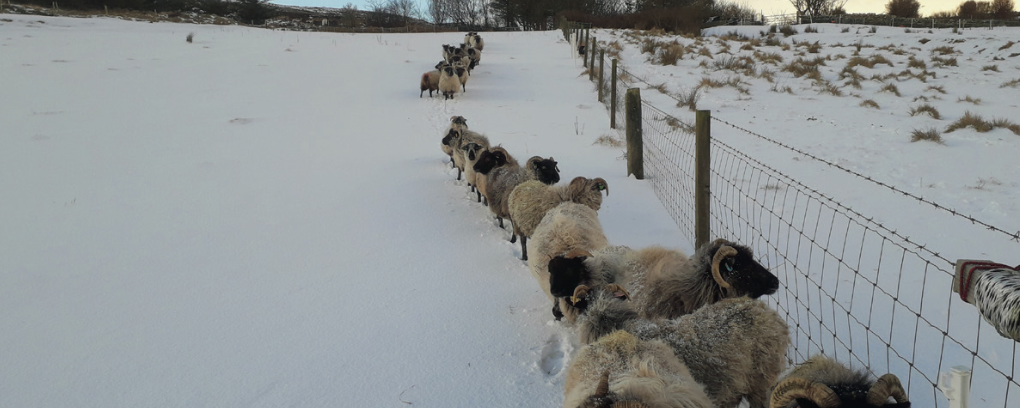
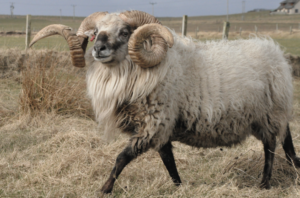
![The Lost Flock [US Edition] cover](https://www.chelseagreen.com/wp-content/uploads/9781915294395-300x451.jpg)
